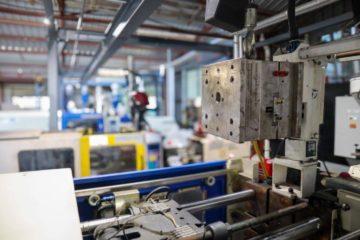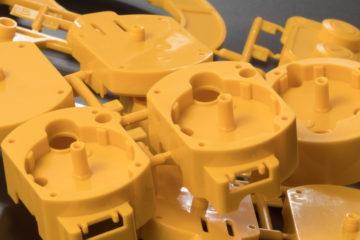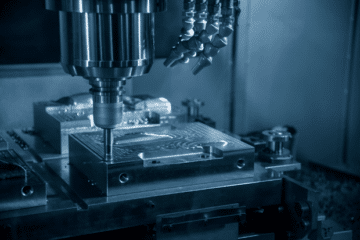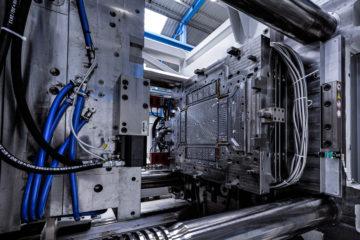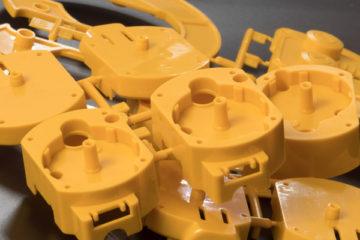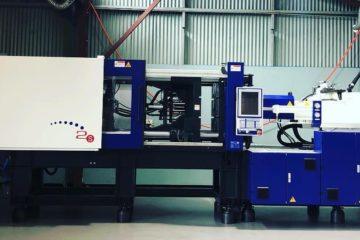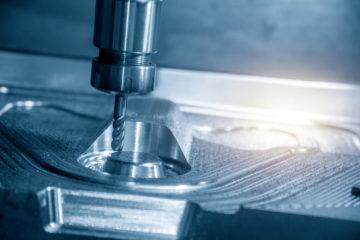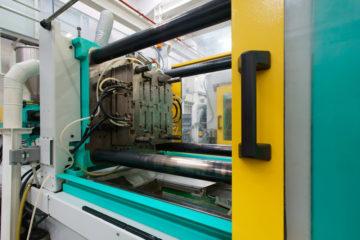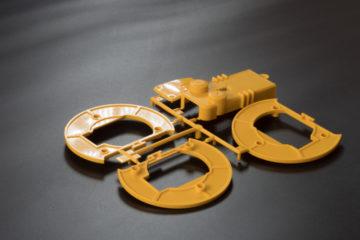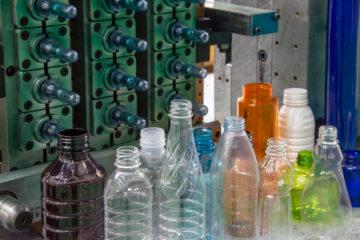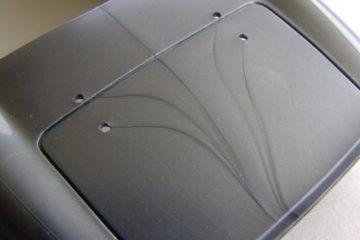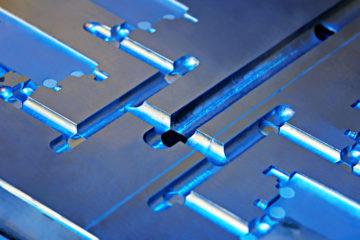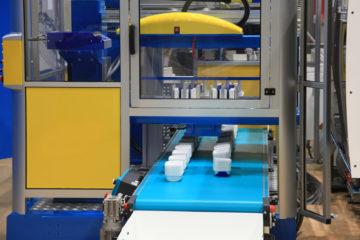An injection moulding machine is a complex piece of machinery that creates one solid part by injecting molten materials through a reciprocating screw system into a mould. This machine is made of many components; it is primarily consisted of a hopper, a barrel containing a reciprocating screw, temperature control devices, a clamping unit and the injection mould itself.
The process begins with the creation of a mould. The mould is created by the Toolmakers from the specifications given to them from the designer or engineer via a 3D computer-generated model. The mould is carefully constructed to allow the two halves of the mould — the mould cavity and the mould core — to separate along the parting line. This will allow easy ejection from the injection moulding machine when the part has cooled. If the mould is designed incorrectly the part may catch on the mould, resulting in possible damage.
The specifications and components of the machine must be carefully set up before the process of injection moulding can begin. Temperatures and pressures will be programmed according to the size and shape of the mould and the material that the part is to be made from. Once the machine is set, the cycle will begin, and the machine can be left unattended to work its magic.
The Injection Moulding Process:
Raw material and colour is fed into the barrel of the machine via the hopper. In the barrel the raw materials are subjected to pressure and temperature until they are melted and malleable. The reciprocating screw inside the barrel will turn, injecting a precise amount of the now molten plastic into the injection mould at a set and controlled temperature, pressure and speed. Once the mould is filled with the molten plastic the injection process will shut off.
The part is then allowed to cool until it is ready to be taken from the mould. This can take some time depending on the materials, wall thickness, overall size and shape of the part being manufactured. When cool, the mould will open automatically.
The mould is built with an ejecting mechanism which ejects the part in preparation for a new cycle. If a portion of the finished part is still caught in the mould at this point the mould will reopen until the part has been completely ejected. When the part is clear of the machine, the hopper will release more raw material and colour into the barrel and a new cycle will begin. The autonomous nature of the injection moulding machine means it can be left unattended once programmed, and may run continuously throughout day and night.
The basic concept of the plastic moulding machine has been around for over seventy years. Since then the original idea — injecting molten plastic into a mould — has evolved dramatically into an efficient, elegant and versatile tool for creating everyday items.
If you’d like to know more about plastic injection moulds and the processes behind them, get in touch with us here.
Subscribe to Our Newsletter
Get the latest news from Dienamics into your inbox





